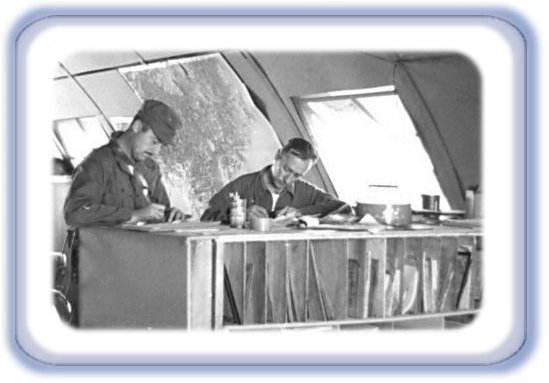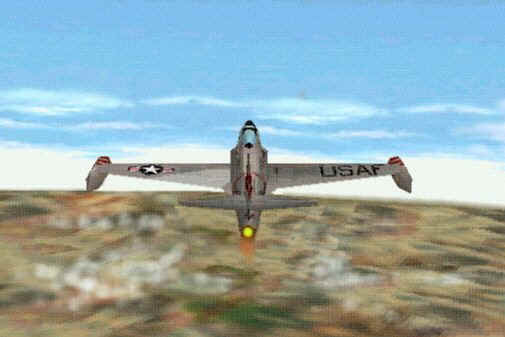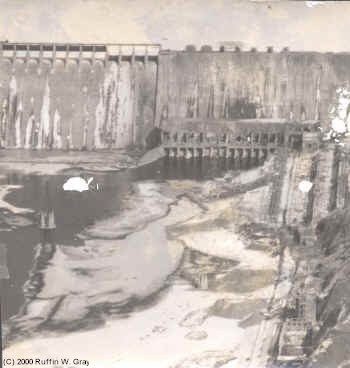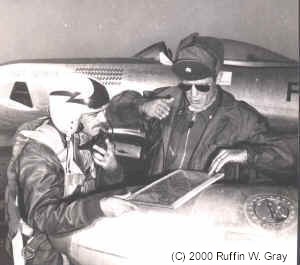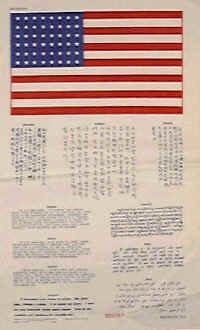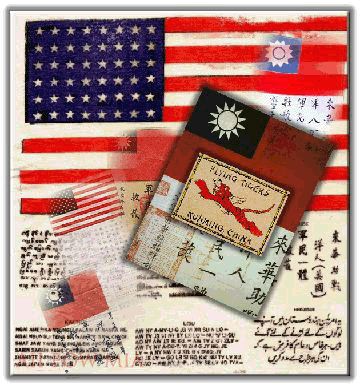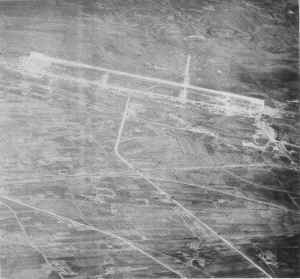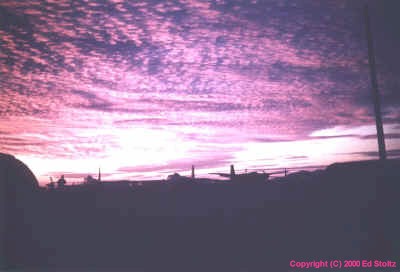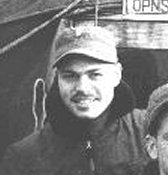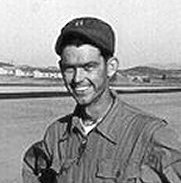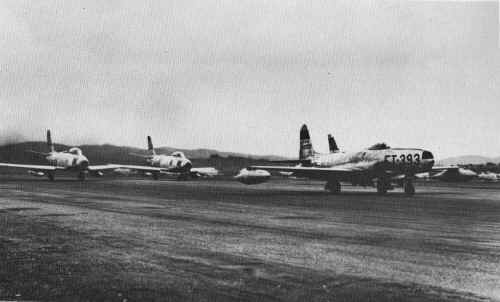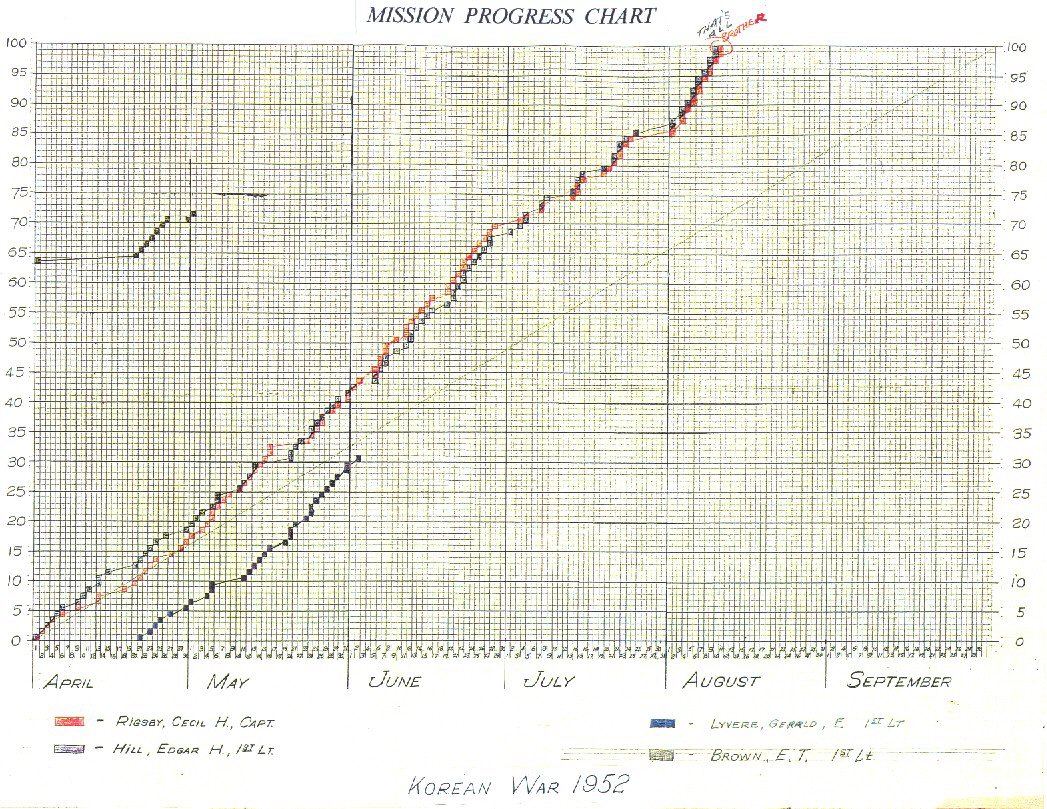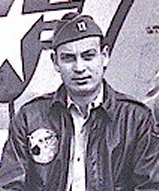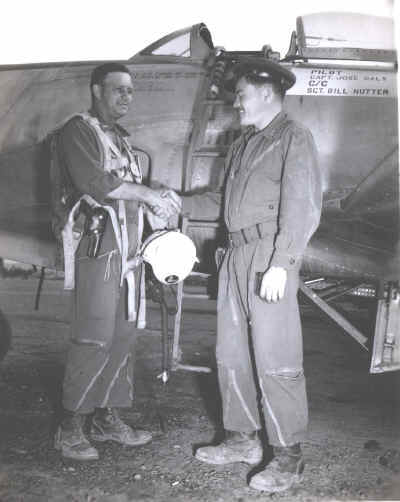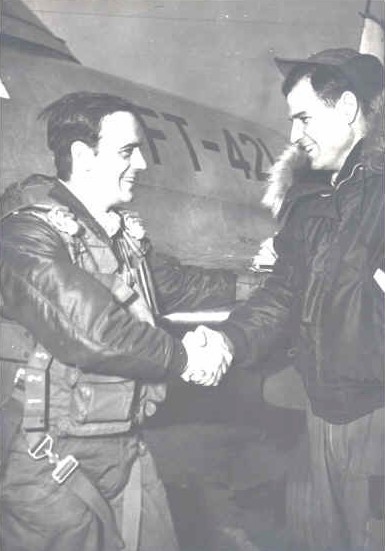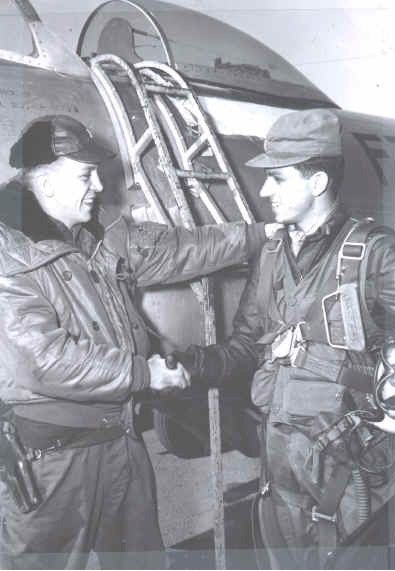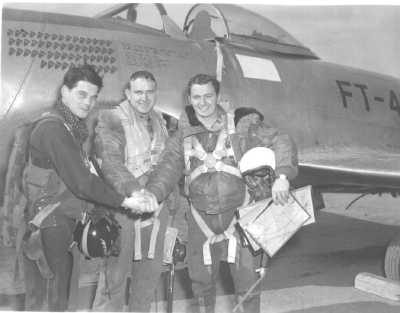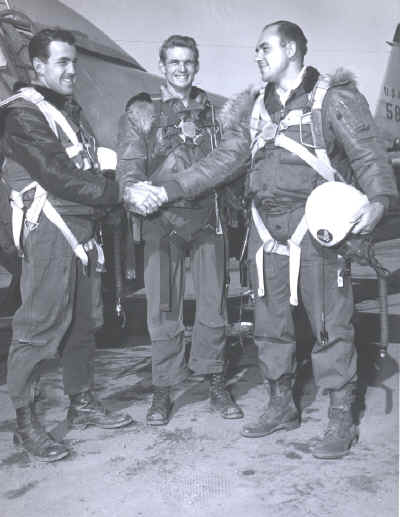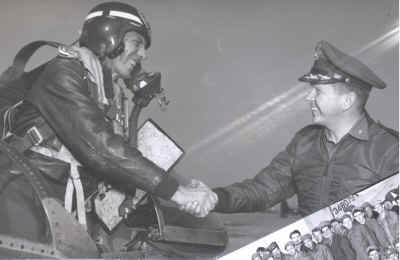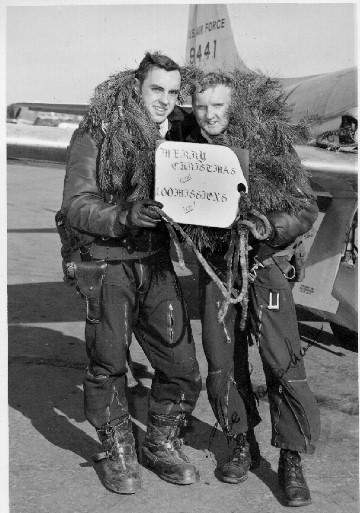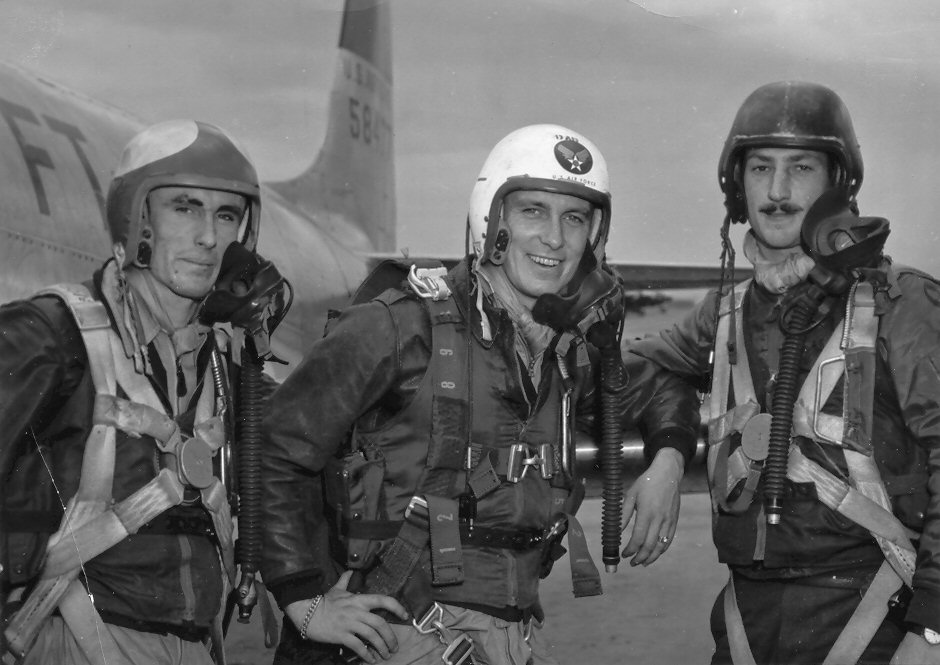Aerial photography may
be divided into six categories: vertical, oblique, fan, continuous
strip, panoramic, and aerial cinematography.
A vertical photograph
is an aerial photograph taken with the camera axis vertical, or
as nearly vertical as practicable, in an aircraft. The camera axis,
therefore, is perpendicular to the earth and ground features appear
in perspective and with minimum distortion of their horizontal dimensions.
Vertical photographs
have relatively small errors of scale and azimuth which result from
tilt, variation in relief features, and optical distortion. Measurements
can be accomplished easily and with moderate accuracy. Scale is
fairly constant throughout the photo. Verticals provide excellent
aids to crews accomplishing high altitude missions.
A disadvantage
of vertical photography is that it presents an image which is seen
from an unfamiliar point of view. Also, only a limited field of view
is shown.
Vertical
reconnaissance photography is generally divided into three categories:
spot photography, reconnaissance strip, and mosaic photography.
SPOT PHOTOGRAPHY
Spot photography
consists of a single photo or stereoscopic pair of a particular
installation; e.g., a photo of an airfield, the objective centered
or pinpointed on the photo.
RECONNAISSANCE STRIP
A reconnaissance
strip is a single flight line of overlapping photos taken at a constant
altitude between two points; e. g., a strip of photos along a rail
line.
MOSAIC PHOTOGRAPHY
Mosaics are two or more
reconnaissance strips, usually parallel, with side lap between strips;
e.g., parallel photo strips over a large city or battle area.
Oblique
Photography
An oblique photo is an
aerial photograph taken with the camera axis directed intentionally
between the horizontal and the vertical. Therefore, the aircraft
does not have to fly directly over the area to be photographed.
A high oblique shows the horizon; a low oblique does not. A high
oblique photo shows much more area than a vertical photo taken with
the same focal length and from the same altitude; however, the images
grow smaller toward the horizon. Objects in the background tend
to lose their proper perspective, proportionate to the obliquity
of camera angle, to the extent that the correct horizontal plane
of individual objects cannot be determined.
In oblique photos, the
terrain appears as a conventional image rather than the map like
presentation of the vertical. Since oblique photos are more pictorial
and more readily read, they provide excellent briefing aids for
crews accomplishing low level missions.
One disadvantage
of oblique photography is that scale diminishes from foreground to
horizon. Calculations are also difficult and must be accomplished
by means of trigonometric computation. Observation is limited to line
of sight. In addition, oblique photography is not very effective at
night.
Oblique
photography is generally divided into three categories: spot photography,
reconnaissance strip, and dicing photography.
SPOT PHOTOGRAPHY
Spot photography
consists of a single photo or stereoscopic pair of a particular installation,
c. g., a photo of an airfield, the objective centered or pinpointed
on the photo.
RECONNAISSANCE STRIP
A reconnaissance
strip is a single flight line of overlapping photos taken at constant
altitude between two points; e. g., an oblique strip along a coast
line, showing beach and coverage inland.
DICING PHOTOGRAPHY
Dicing photography consists
of oblique photos taken from an oblique camera position at extremely
low altitude and high speed; e. g., dicing run of a highway to determine
the number of troops, type of vehicles, and armament of an enemy
army.
Fan
Photography
Fan photography
is obtained from combinations of vertical and oblique camera installations.
Fan photography is used for strip and mosaic coverage because of its
wide lateral coverage along a single flight line. Its disadvantage
is that the scale diminishes from the center to the edge.
Continuous
Strip Photography
The purpose
of the strip camera is to permit taking a continuous aerial picture
of the terrain while the aircraft is flying at low altitudes and at
high groundspeeds. By the proper selection of components, either single
or stereoscopic photographs may be obtained from a single camera for
reconnaissance purposes.
The camera
provides stereoscopic pictures by producing two adjacent strip exposures.
The images, when viewed through a stereoscopic viewer, are three-dimensional
in nature. During World War II, the Navy put the strip camera to considerable
use in the determination of water depths and heights of obstacles
at landing beaches. At present, strip photography is employed at low
altitudes.
The strip camera employs
the moving film principle (film synchronized with image movement)
to obtain continuous aerial strip photography. The movement of the
film across the focal plane behind a variable-width slit is synchronized
with the speed of the aircraft over the ground. Photography at maximum
speed is thereby made possible.
Panoramic
Photography
Panoramic photography
is photography obtained by swinging or "panning" an aerial
camera to photograph the terrain from horizon to horizon. Actually
the camera is not swung. A dove prism is rotated in front of the
camera lens and the result is as though the camera were swung.
Aerial
Cinematography
Because the Air Force
started using jet aircraft, a complete change in the techniques
of taking aerial motion pictures had to be made.
When photographing from
a jet, it is necessary to shoot through the Plexiglas which has
very little if any flat surface; therefore, the camera lens must
be placed as close to the glass as possible. The Plexiglas should
be blackened out in all areas surrounding the camera and in the
immediate area of the camera. This must be done to minimize the
reflections. It may be done either by taping a dark cloth or brown
paper inside the canopy or by painting the surface with flat black
poster paint. Poster paint may be easily removed with water at the
completion of the mission.
Another method of minimizing
reflections from Plexiglas is to construct a cone of black cloth
with an elastic in the small end that will fit around the lens housing
and viewfinder, with the wide end taped to the Plexiglas. Care should
be taken that the wide end of the cone allows sufficient width to
accommodate any necessary camera panning and tilting. The rims of
the lenses should also be blackened to prevent their reflection
in the Plexiglas.
When photographing air
to air combat runs on which napalm bombs are being dropped, rockets
are being fired, or strafing is taking place, perfect timing is
essential. The photographer and pilot must work as a perfect team
at all times, and the photographer must be in constant radio contact
with the pilot of both the camera aircraft and the aircraft being
photographed.
AIR TO GROUND
Air to ground missions
normally necessitate using a camera with large film capacity to
cover the longer scenes fully. Because of the unusual degree of
tilt needed and the larger type camera used, an aircraft with more
room for movement is desirable. Normally this type of photography
is performed from a cargo door, waist hatch, bomb bay, or if direct
verticals are necessary, a camera hatch on the floor of the aircraft.
A camera with a variable type shutter is recommended. The shutter
degree opening should be 90 degrees or less when photographing straight
down at lower altitudes; if this is not done, a picket fence type
effect results. Photographing bomb drops and bomb evaluation missions
are classified in this air to ground category.
GROUND TO AIR
Ground to air cinematography
entails many varied assignments for the motion picture cameraman.
A few are: air-to-ground support, test of new type aircraft, guided
missiles, fire power demonstrations, and data recording. The cameraman
must be in constant practice to be proficient in tracking airborne
missiles. Camera speed and shutter speed vary, depending on the
type of coverage desired. A tripod and the down chain should be
used because longer focal length lenses are usually needed which
demand a very sturdy mount. To date, no known professional type
tripod is capable of direct overhead tracking without some type
of modification such as a 90-degree angle placed between the friction
head and the camera body. Filters should be used in this type of
mission due to the atmospheric haze frequently encountered. The
choice of filter depends entirely upon the location of the work
and the desired results.
Aerial cinematography
may be used to great advantage by the Air Force in all categories
listed above, whether it be in data recording for research or on
an air strike. Through motion pictures, the mission of the Air Force
is best told to its own personnel and to the general public.
Photographic,
visual, weather, and electronic reconnaissance are all important in
securing information necessary to wage successful warfare. In this
manual, however, we will be concerned only with aerial photographic
reconnaissance.
We have discussed the
types of aerial photographic reconnaissance and seen how the cycle
from pioneer through strike to surveillance provides a comprehensive
survey of the enemy, his targets, and terrain. Cartographic reconnaissance
provides photography necessary for preparing maps for ground operations
and navigational and target charts.
These aerial
photographic reconnaissance missions are accomplished by various types
of aerial photography: vertical, oblique, fan, continuous strip, and
cinematography.
In this chapter, we have
seen the over-all picture of aerial reconnaissance and more specifically,
aerial photographic reconnaissance.
The material in the next
chapter goes into the principles with which you must be familiar
in performing aerial photographic reconnaissance.
